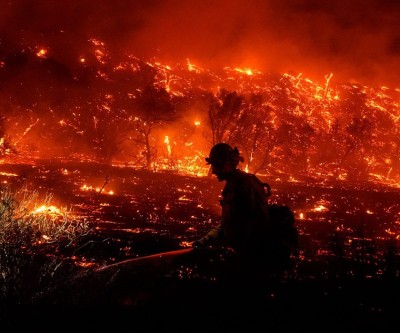Latest News
- Four years after Indigenous woman dies in Niagara Hospital, family still waiting for coroner's investigation
- Lawyer: British Columbia RCMP officer should be fired or resign immediately
- B.C. government looks to offer loan guarantees to property owners in Cowichan Aboriginal title area
- Uber driver's account in Toronto suddenly deactivated; only source of income cut off after 'duplicate account' claim
- TDSB education chief fired by provincial supervisor; sweeping changes at Canada's largest education board
Latest Ads
-
Jasmine Jewel
Call
-
Omidan group
Call
-
Amir Madanpour
Call
-
Dimo studio
Call
-
Yorkacademy
Call
-
Maryambagheri
Call
-
Shishlix Restaurant
Call

Graves of five children and two adults discovered near former Fort Resolution boarding school
The Deninu Kųę́ First Nation in Fort Resolution, Northwest Territories, Canada, has announced that after years of searching, it has successfully identified the burial sites of five children and two adults, believed to be connected to the former St. Joseph’s Residential School.
In a statement released Thursday evening, the First Nation confirmed that the locations were discovered on Mission Island, adding: “The identities of those buried and the causes of their deaths remain unknown.”
Elders and community members have long maintained that there were unmarked graves in the area. The search, which began in 2022, was guided by elders such as Angus Beaulieu, who believed that Mission Island was the burial place for many individuals before the school was relocated to Fort Resolution and became fully operational in 1910. The school had originally operated on Mission Island from 1857 to 1890.
Initial search efforts, including the use of ground-penetrating radar, yielded no results, but elders insisted that the island was the right location. Eventually, the investigation team analyzed aerial photographs and identified a protected area that had been spared from wildfire and logging. Cadaver dogs were brought in to pinpoint potential sites, and excavation by the Deninu Kųę́ First Nation’s archaeology team revealed the burials.
The First Nation stated that finding the seven burial sites is “only the beginning” and estimates suggest there could be as many as 60 unmarked graves linked to the school. Residents have long called for an investigation into the total number of such graves.
Earlier this year, Chief Louis Balsillie drew public attention to the community’s efforts to exhume and identify the remains of unknown students from the former school’s cemetery — a process he says was obstructed by the territorial government. He and Tu Nedhé-Wiilideh MLA Richard Edjericon have also emphasized the importance of returning the remains of a child named Alma, who died in the 1940s while attending the residential school, to her home community.
In Thursday’s statement, Balsillie said: “The Northwest Territories must acknowledge that these burial sites hold the remains of children who died in unacceptable circumstances — circumstances that, had they occurred at a non-Indigenous boarding school, would undoubtedly have been investigated.”
Suggested Content
Latest Blog
Login first to rate.
Express your opinion
Login first to submit a comment.
No comments yet.


































